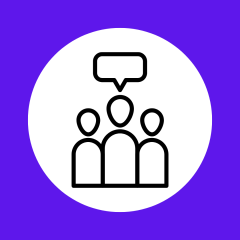Civil Society Capture
Civil society refers to charities, non-governmental organizations, trade unions, social movements and other groups. The technique of creating front groups (sometimes called astro-turf organizations) has a long history in the era of corporate capitalism (Miller & Dinan, 2008).
Some companies, like Pfizer, are known to be very proactive in developing means to capture civil society (Drahos & Braithwaite, 2002). Pfizer has prioritized the funding and creation of think tanks all over the world. Former Reagan administration official, Catherine Windels, was in charge of ‘Worldwide Policy Mobilization at Pfizer’ and is sometimes described as the “godmother of think tanks” (Powerbase, 2014). During her 22 years career at Pfizer, she helped create new think tanks and networks of think tanks in Europe, Canada, Africa and Asia, and also worked closely with many leading institutes in the United States. Among others, she is the former Secretary Treasurer of the very influential Fraser Institute in Canada.
However, the creation of front groups for lobbying purposes is only one technique to capture civil society. Many grassroots organizations in civil society can be captured or influenced by corporate groups, especially when they rely on corporate grants to fund their activities. In the pharmaceutical sector, patient groups can play a key role in getting a drug approved and reimbursed by insurers at very high prices. Most patient groups are not created by drug companies but they do, however, often rely on corporate donations to fund their activity. Not surprisingly, they often end up defending the interests of drug companies (getting drugs approved and reimbursed at high prices) in spite of claims that their funding does not influence their discourse (Batt, 2017). Note that it is likely that these groups did not change their discourse because of their funding;however, it must beconsidered that drug companies will fund only groups who already embraced the “right” discourse in order to make sure that this “patient voice” has more impact than others in the regulatory debates. While drug companies might fund specific groups to support specific products, drug companies can also band together to fund specific groups to support specific regulation in favor of their sectors, such as when they hired marketing firms to create non-profit groups to push for higher drug prices in the name of patients (Elgin, 2019).
The companies GlaxoSmithKline (GSK) and Novartis detail their financial grants to different charities and patient groups in the United States. According to their website, GlaxoSmithKline distributed $29.4 million to US-based non-profit organizations in 2017. According to their website, Novartis spent $20.4 million on patient organizations in the United States in 2017. According to their website, Roche disclosed $25.5 million in grants to patient organizations in the United States in 2018. According to their website, Genentech paid $58 million in grants and donations to patient groups and independent medical education initiatives. If the funding patterns of GSK, Novartis, Roche and Genentech are representative of other companies and considering that GSK, Novartis, Roche and Genentech represented jointly 14.3% of the total $952.5 billion global prescription drug markets (Pharmaceutical Technology, 2019), we can estimate that drug companies spent almost a billion ($932 millions) in grants to patient groups and education in the United States in 2017.
In Canada, in the context of discussions about implementing national pharmacare, GSK funded patient groups specifically “to increase the role of the patient voice in the discussion on National Pharmacare” (GlaxoSmithKline, 2017) or for advocacy boot camps to train patient advocates in order “to get access to the right treatment at the right time for the right individual” (GlaxoSmithKline, 2018). In many ways, patient organizations have become a central part of the communication strategies used by Big Pharma (McCoy, 2018).
References
Batt, S. (2017). Health Advocacy, Inc: How Pharmaceutical Funding Changed the Breast Cancer Movement. UBC Press.
Drahos, P., & Braithwaite, J. (2002). Information Feudalism: Who Owns the Knowledge Economy? (1. publ). Earthscan.
Elgin, B. (2019, April 25). Pharma’s Secret to Lobbying for Higher Drug Prices? Bloomberg. https://www.bloomberg.com/news/articles/2019-04-25/pharma-s-charity-allies-help-its-fight-to-keep-drug-prices-high
GlaxoSmithKline. (2017). GSK Patient Group Funding—2016. GlaxoSmithKline. http://ca.gsk.com/en-ca/responsibility/responsibility-reports-and-additional-data/patient-group-funding/2016-best-medicines-coalition/
GlaxoSmithKline. (2018). GSK Patient Group Funding—2017. GlaxoSmithKline. http://ca.gsk.com/en-ca/responsibility/responsibility-reports-and-additional-data/patient-group-funding/2017-advocacy-boot-camp/
McCoy, M. S. (2018). Industry Support of Patient Advocacy Organizations: The Case for an Extension of the Sunshine Act Provisions of the Affordable Care Act. American Journal of Public Health, 108(8), 1026–1030. https://doi.org/10.2105/AJPH.2018.304467
Miller, D., & Dinan, W. (2008). A Century of Spin: How Public Relations Became the Cutting Edge of Corporate Power. Pluto Press.
Pharmaceutical Technology. (2019, March 7). The Top Ten Pharmaceutical Companies by Market Share in 2018. Pharmaceutical Technology. https://www.pharmaceutical-technology.com/analysis/top-pharmaceutical-companies/
Powerbase. (2014). Catherine Windels. Powerbase. https://powerbase.info/index.php?title=Catherine_Windels
